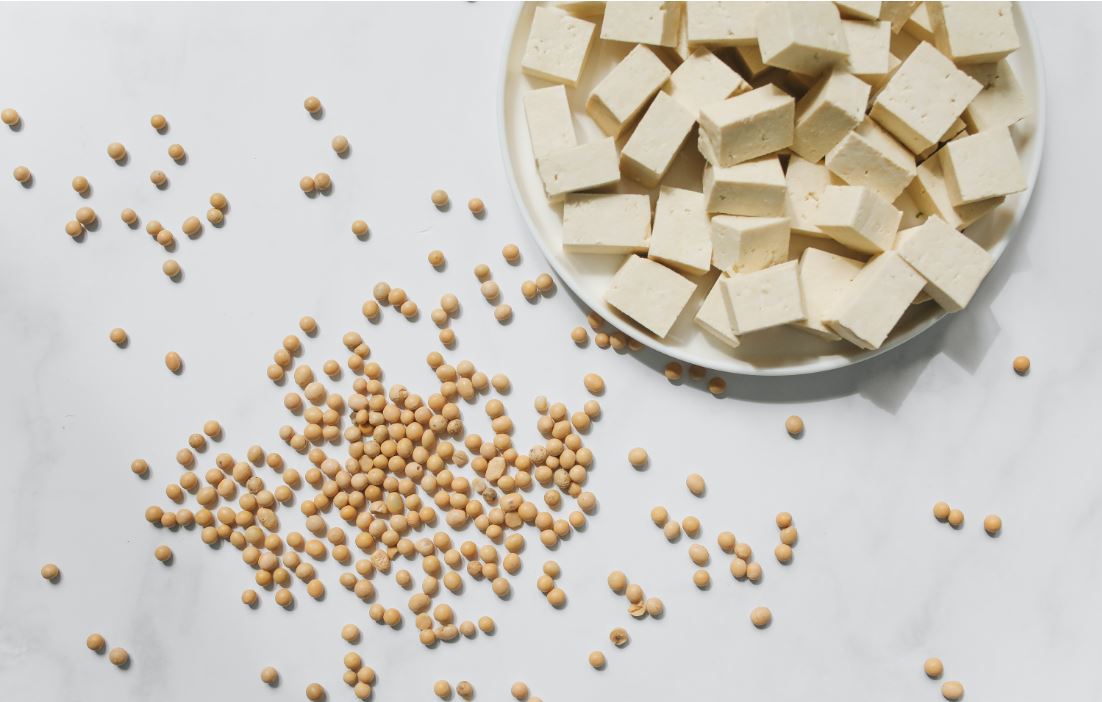Many plants and plant-based foods such as tofu and chickpeas have been found to contain the natural compounds phyto oestrogens. When we consume these foods, these compounds can affect the person the same way, oestrogen, the primary female sex hormone produced by the body, affects us.
These natural compounds are a fairy recent discovery and there is ongoing research on their uses and benefits.
Types of Phytoestrogens and Food Sources
Phyto oestrogens are mostly classed as flavonoids – a large class of plant pigments. They can be found in soybeans, other legumes, berries, grains and nuts.
Other researched types of phyto oestrogens are:
Lignans – which can be found in foods such as seeds, especially flaxseeds, nuts and fruits and berries.
Isoflavones – which can be found in higher quantities in soybeans and also other legumes, plus foods such as berries, grains and wine.
Resveratrol – which is found in fruits such as red grapes, berries, red wine and also foods such as chocolate.
Quercetin – which is a phyto oestrigen found in fruits such as apples, vegetable such as onions and grains.
Benefits of Phytoestrogens
Phytoestrogens have a number of health benefits including:
- Menopause hot flushes symptoms – a meta-analysis study, type of research incorporating a number of independent studies, showed that phytoestrogens helped lower the frequency of hot flashes in menopausal women (1).
- Postmenopausal Osteoporosis – as oestrogen is important for bone health, a reduction in this hormone during and after the menopause is linked with osteoporosis – a condition which causes the bones to become weak and brittle. Research suggests that the consumption of phytoestrogens may be beneficial in the prevention of osteoporosis (2).
- Heart Health – phytoestrogens may also benefit heart health. Research has found that consuming these isoflavones may be beneficial in post-menopausal women (3).
- Breast Cancer – research links the consumption of ligands, type of phytoestrogens found in foods such as flaxseed to the reduction of the risk of breast cancer (4).
Would you benefit from Consuming Phyto Oestrogenic Foods if You are a Man?
As phyto oestrogens mimic the role of oestrogen, a primarily female hormone, research is also examining the role of phyto oestrogen consumption in men. Unfortunately, so far the research is inconclusive with some scientific studies suggesting that soy protein and isoflavones do not have an effect on male reproductive hormones (5), whilst other studies conducted with animals showed potential negative effects (6).
Regardless of the potential effects of phyto oestrogen in men, we should remember that very few foods such as soy beans and tofu contain high levels of phyto oestrogens and as part of a balanced diet men and women should be consuming a variety of foods on daily basis and the emphasis should not be solely on a single type of food.
Bibliography:
1. Chen MN, Lin CC, Liu CF. Efficacy of phytoestrogens for menopausal symptoms: A meta-analysis and systematic review. Climacteric. 2015.
2. Al-Anazi AF, Qureshi VF, Javaid K, Qureshi S. Preventive effects of phytoestrogens against postmenopausal osteoporosis as compared to the available therapeutic choices: An overview. Journal of Natural Science, Biology and Medicine. 2011.
3. A. Sobenin I, A. Myasoedova V, N. Orekhov A. Phytoestrogen-Rich Dietary Supplements in Anti-Atherosclerotic Therapy in Postmenopausal Women. Curr Pharm Des. 2015;
4. Jungeström MB, Thompson LU, Dabrosin C. Flaxseed and its lignans inhibit estradiol-induced growth, angiogenesis, and secretion of vascular endothelial growth factor in human breast cancer xenografts in vivo. Clin Cancer Res. 2007;
5. Hamilton-Reeves JM, Vazquez G, Duval SJ, Phipps WR, Kurzer MS, Messina MJ. Clinical studies show no effects of soy protein or isoflavones on reproductive hormones in men: Results of a meta-analysis. Fertil Steril. 2010;
6. Setchell KDR, Gosselin SJ, Welsh MB, Johnston JO, Balistreri WF, Kramer LW, et al. Dietary estrogens-A probable cause of infertility and liver disease in captive cheetahs. Gastroenterology. 1987;

